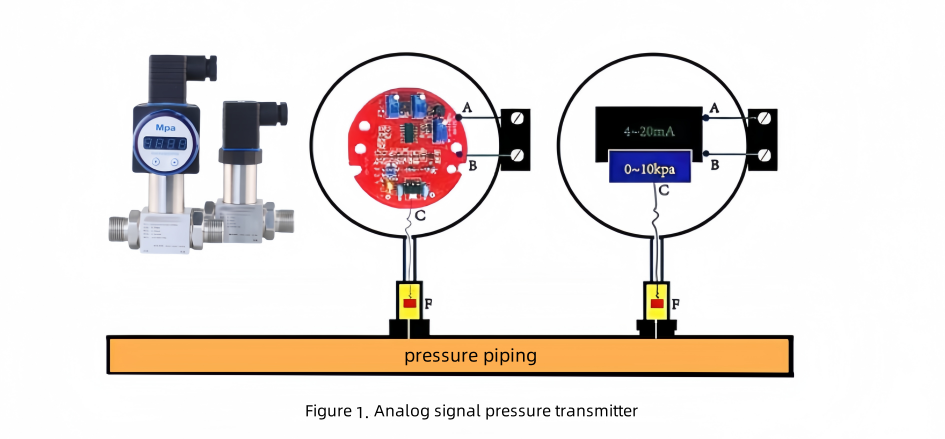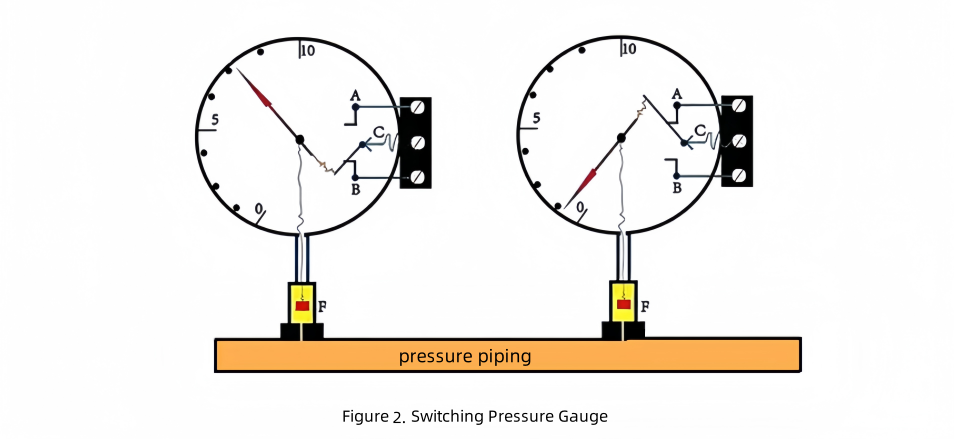BETTER TOUCH BETTER BUSINESS
Contact Sales at KAIDI.
In the use of field flow instrumentation, switching and analog are the two most used input and output methods. Today, we will use a combination of graphics to explain in detail how the principle of switching and analog.
analog

The level instrumentation in Figure 1 is a pressure transmitter, which can be a good solution to the above problem of transmitting the pressure value far out. There is a circuit board inside the pressure transmitter, the pressure transmitter circuit board connected to the pressure sensor F. The working principle of the pressure transmitter is the pressure sensor F to detect the pressure to the circuit board of the C, the detection of the signal into the circuit board, through the circuit board of the conversion and calculation of the pressure signal is converted into a current signal by the two points of the output A and B. The right side of the figure is the pressure transmitter signal conversion diagram. The right side of the figure is the pressure transmitter signal conversion schematic, it can be a 0-10kpa pressure signal into a 4-20mA current signal from the A and B of the two points of output. At this point we say the pressure transmitter A and B of the two points of output is an analog signal. Analog signal is characterized by its value is in a numerical range is continuously variable.
switching mode

Figure 2 is a typical switching signal pressure table intention. When the pressure is high, the two contacts C and B are closed and turned on to output a high pressure signal, and when the pressure is low, the two contacts C and A are closed and turned on to output a low pressure signal. Here C and B are a switching quantity, and C and A are also a switching quantity. So a switching contact is a switching quantity, which is characterized as either on or off at the same moment. On is 1, which means there is a signal, and off is 0, which means there is no signal. This is called a switching signal.
With such a switching signal, it is also possible to transmit the local pressure signal to the control center remotely to participate in automation remote control. However, it only transmits the signal of whether there is pressure or not, and it is impossible to know what the real-time pressure value is.
We are here to help you! If you close the chatbox, you will automatically receive a response from us via email. Please be sure to leave your contact details so that we can better assist